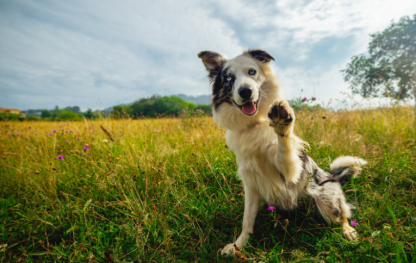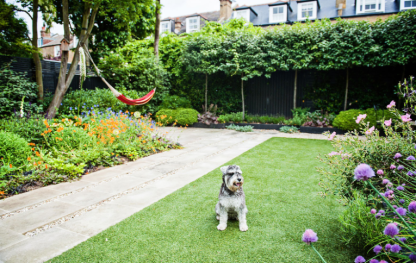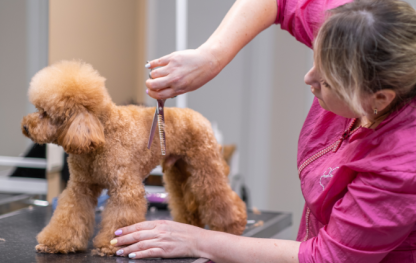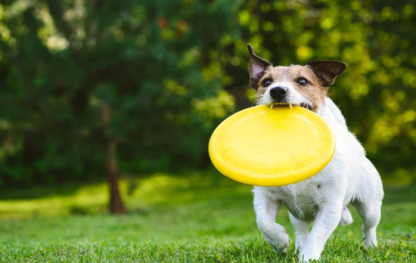Understanding Canine Body Language During Walks
Walking your dog isn’t just about exercise—it’s also an opportunity for communication. Dogs use body language to express their emotions, comfort levels, and reactions to their environment. By learning to read your dog’s signals, you can ensure safer, more enjoyable walks while strengthening your bond.
Here’s how to understand your dog’s body language during walks and what it reveals about their mood.

1. Relaxed and Happy Body Language
A happy and relaxed dog enjoys their walk and feels comfortable in the environment. Signs of positive body language include:
- Loose, wagging tail (not stiff or tucked).
- Ears in a neutral or slightly forward position.
- Mouth slightly open with a relaxed tongue.
- Bouncy or fluid movement with no tension in the body.
If your dog displays these signs, they’re enjoying the walk and feeling at ease.
2. Alert and Curious Behavior
Dogs are naturally curious, and you may notice them becoming more alert in response to new sounds, scents, or sights. Signs of curiosity include:
- Ears pricked up or tilted forward.
- Tail raised slightly but not stiff.
- Focused eyes and nose actively sniffing.
- Slow, deliberate movements toward an object or scent.
Curiosity is normal, but monitor their reaction to make sure they remain calm and don’t get overstimulated.

3. Signs of Anxiety or Stress
Anxious dogs may feel uncomfortable during walks due to new environments, loud noises, or unfamiliar people and animals. Watch for these signs of stress:
- Tucked tail or tail held low.
- Yawning, lip licking, or excessive panting (not due to heat).
- Ears pinned back against the head.
- Lowered body posture or crouching.
- Avoidance behavior, such as trying to walk in a different direction or stopping suddenly.
If your dog appears stressed, give them space, slow down, or create distance from the stressor. Encouraging words and treats can also help build their confidence.
4. Signs of Fear or Aggression
A fearful or defensive dog may react negatively to perceived threats. Understanding early warning signs can help prevent aggressive encounters. Watch for:
- Rigid, stiff body posture.
- Growling or baring teeth.
- Intense staring or wide eyes (whale eye, where whites of the eyes show).
- Raised hackles (fur along the back standing up).
- Tail tucked tightly between the legs or stiff and high in a dominant stance.
If your dog exhibits these signs, stay calm and avoid forcing interactions. Create distance from the trigger and redirect their attention with treats or a change of direction.
5. Signs of Overstimulation or Excitement
Some dogs get overly excited during walks, especially when they see other dogs, people, or wildlife. Signs of high excitement include:
- Jumping or lunging forward.
- Fast tail wagging with an arched back.
- Whining or barking excessively.
- Zoomies (sudden bursts of energy and erratic running).
Excited dogs need controlled redirection. Try using commands like “sit” or “look at me” with positive reinforcement to regain their focus.
6. When Your Dog Wants to Stop
If your dog suddenly stops walking, sits, or refuses to move, they might be:
- Tired or overheated (especially in warm weather).
- Nervous or hesitant about something ahead.
- Experiencing discomfort (paw injury, harness too tight, etc.).
Check for any physical issues and assess the environment. If they’re hesitant, offer encouragement and patience instead of pulling them forward.
Final Thoughts
Reading your dog’s body language helps create safer, more enjoyable walks by recognizing their comfort levels, triggers, and emotional state. A relaxed, engaged dog enjoys their walk, while signs of stress, fear, or overstimulation indicate a need for adjustments.
By paying attention to tail movements, ear positioning, posture, and vocalizations, you can better understand what your dog is feeling and respond appropriately. The more you learn to read their signals, the stronger your bond will become.
Next time you’re out for a walk, watch how your dog communicates—it might reveal more than you think!





